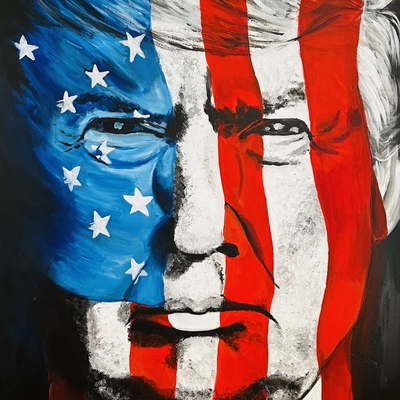Stay informed on the latest Truth Social posts from Donald Trump (@realDonaldTrump) without the doomscrolling. Consider it a public service for your mental health. (Why?)
- Unfair outside competition affects heavy truck manufacturers.
- A 25% tariff will be imposed on heavy trucks made in other parts of the World, effective October 1st, 2025.
- The tariff will protect domestic large truck company manufacturers.
- The financial health and strength of truckers are important for national security.
The proposed 25% tariff on imported heavy trucks, set for October 2025, is likely to have a moderate to significant impact on the S&P 500. This policy directly affects the automotive and transportation sectors, particularly heavy truck manufacturers and related supply chains. Companies like PACCAR (owner of Peterbilt and Kenworth) and Daimler Truck (Freightliner) could see direct impacts, potentially positive for domestic production but potentially negative for companies relying on imported components or facing retaliatory tariffs. The overall economic implications for logistics costs, consumer prices, and international trade relations could also influence broader market sentiment.
The post outlines a protectionist trade policy involving a 25% tariff on imported heavy trucks. While trade policies can lead to international economic friction, the post does not contain direct threats, ultimatums, or military references that would indicate a high likelihood of immediate international conflict escalation.
- Commodities: Gold (XAU) could see upward pressure as a safe-haven asset if the policy triggers increased trade tensions or economic uncertainty. Industrial metals like copper may experience varied demand depending on manufacturing shifts and supply chain adjustments. Oil (WTI) is less directly impacted but could react to broader global growth sentiment. Short-Term Watchlist: XAU/USD price action, industrial metal prices, freight cost indices. Medium-Term Focus: Inflationary pressures from tariffs, global industrial demand, trade policy developments.
- Currencies (Forex): The US Dollar Index (DXY) could experience volatility. It may strengthen if the policy is perceived to boost domestic industry and reduce imports, or weaken if trade friction leads to broader risk aversion. Currencies of countries targeted by potential tariffs or those heavily reliant on truck manufacturing/exports could be affected. Short-Term Watchlist: DXY movements, reactions from major trading partners, Treasury yields. Medium-Term Focus: Global trade balances, central bank policy divergence, capital flow shifts related to trade.
- Global Equities: US heavy truck manufacturers and their suppliers would be directly impacted, potentially positively for those with significant domestic production. The S&P 500's industrial and transportation sectors would be under scrutiny. Global indices like STOXX 600, Nikkei 225, and Hang Seng could react to potential retaliatory tariffs and broader global trade uncertainty. Short-Term Watchlist: Stock performance of major truck manufacturers (e.g., PACCAR, Daimler Truck), transportation sector ETFs, market futures, VIX. Medium-Term Focus: Corporate earnings guidance, supply chain restructuring, global trade policy developments.
- Fixed Income (Bonds): US Treasury yields (10Y and 2Y) could exhibit mixed reactions; potentially falling due to a flight to safety amid trade uncertainty or rising due to inflationary pressures from tariffs. Credit spreads, particularly in industrial and transportation sectors, may widen if the policy is perceived to increase corporate risk. Short-Term Watchlist: UST 10Y yield levels, credit default swap spreads, ETF flows into safe-haven bonds. Medium-Term Focus: Inflation outlook, central bank monetary policy adjustments, sovereign debt stability.
- Volatility / Derivatives: The VIX could spike if the trade policy generates significant market uncertainty or fears of broader trade conflicts. Options positioning may show increased demand for protection or hedging strategies, particularly in directly impacted sectors. Short-Term Watchlist: VIX index, futures term structure, equity index options implied volatility. Medium-Term Focus: Market's long-term perception of trade policy risk, shifts in systemic risk indicators.
- Crypto / Digital Assets: Bitcoin (BTC) could potentially react as a safe-haven asset if the policy leads to increased global economic uncertainty or as a risk-on asset if perceived positively for specific economies. Its correlation with traditional risk assets, particularly tech stocks, will be a key determinant. Short-Term Watchlist: BTC/USD price action, crypto market liquidity indicators. Medium-Term Focus: Macroeconomic backdrop, regulatory developments related to digital assets, global risk appetite.
- Cross-Asset Correlations and Systemic Risk: The potential for trade tensions could stress normal cross-asset correlations, particularly if a broader trade conflict emerges. Systemic risk indicators should be monitored for signs of liquidity stress or re-pricing of global supply chain risk. Short-Term Watchlist: MOVE index, credit spreads across sectors, co-movement of equities and bonds. Medium-Term Focus: Global economic interconnectedness, central bank actions, sovereign risk assessments.
- Retail Sentiment / Market Psychology: The 'protect our manufacturers' narrative could resonate with retail investors, potentially leading to increased interest or 'buy domestic' sentiment in specific US heavy truck companies or related ETFs. Social media discussions around national security and industrial protection could influence retail trading behavior. Short-Term Watchlist: Social media trends, discussion forums, volume spikes in related stocks. Medium-Term Focus: Broader retail investment trends in response to protectionist economic policies, impact on consumer purchasing decisions.

